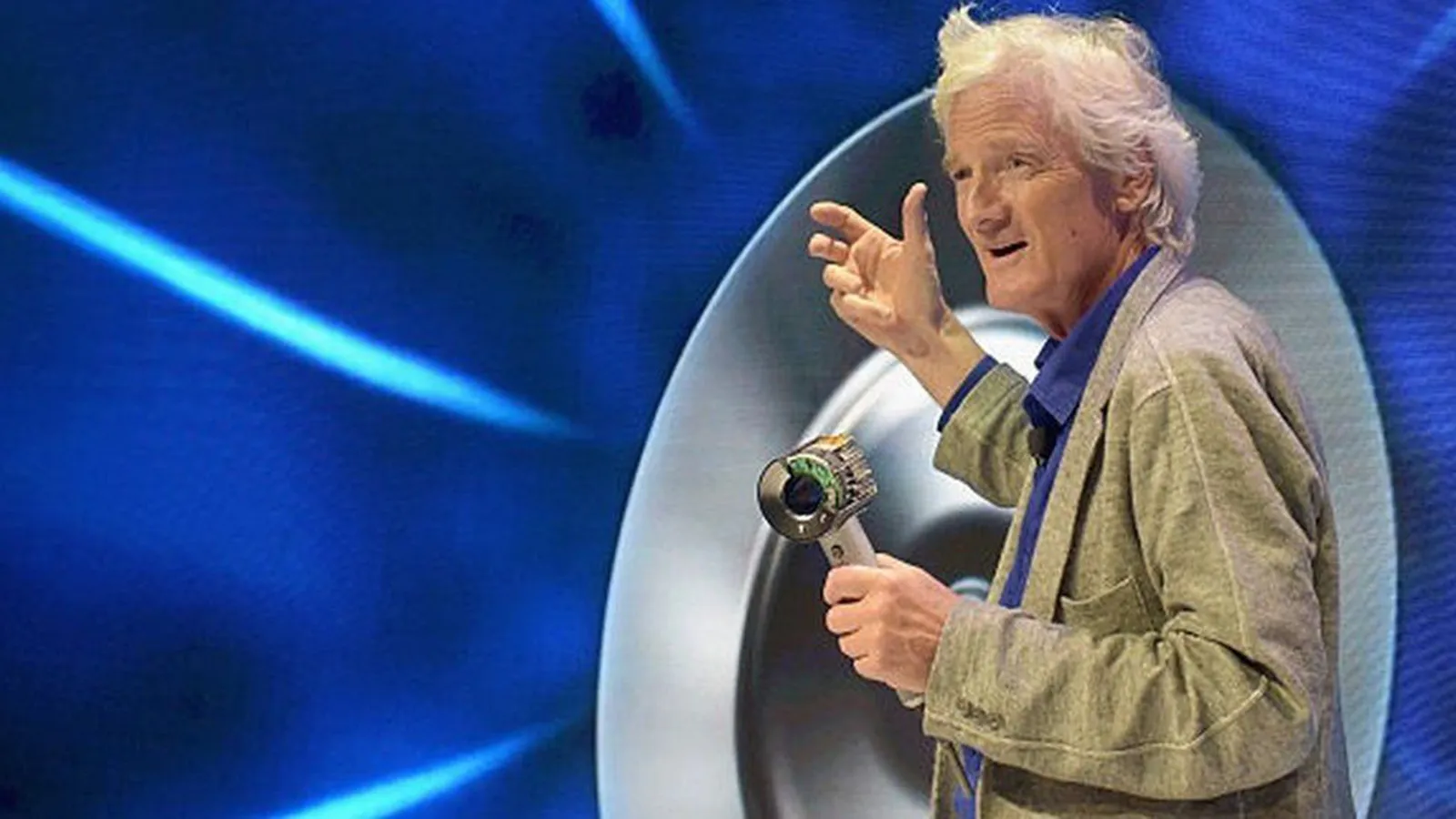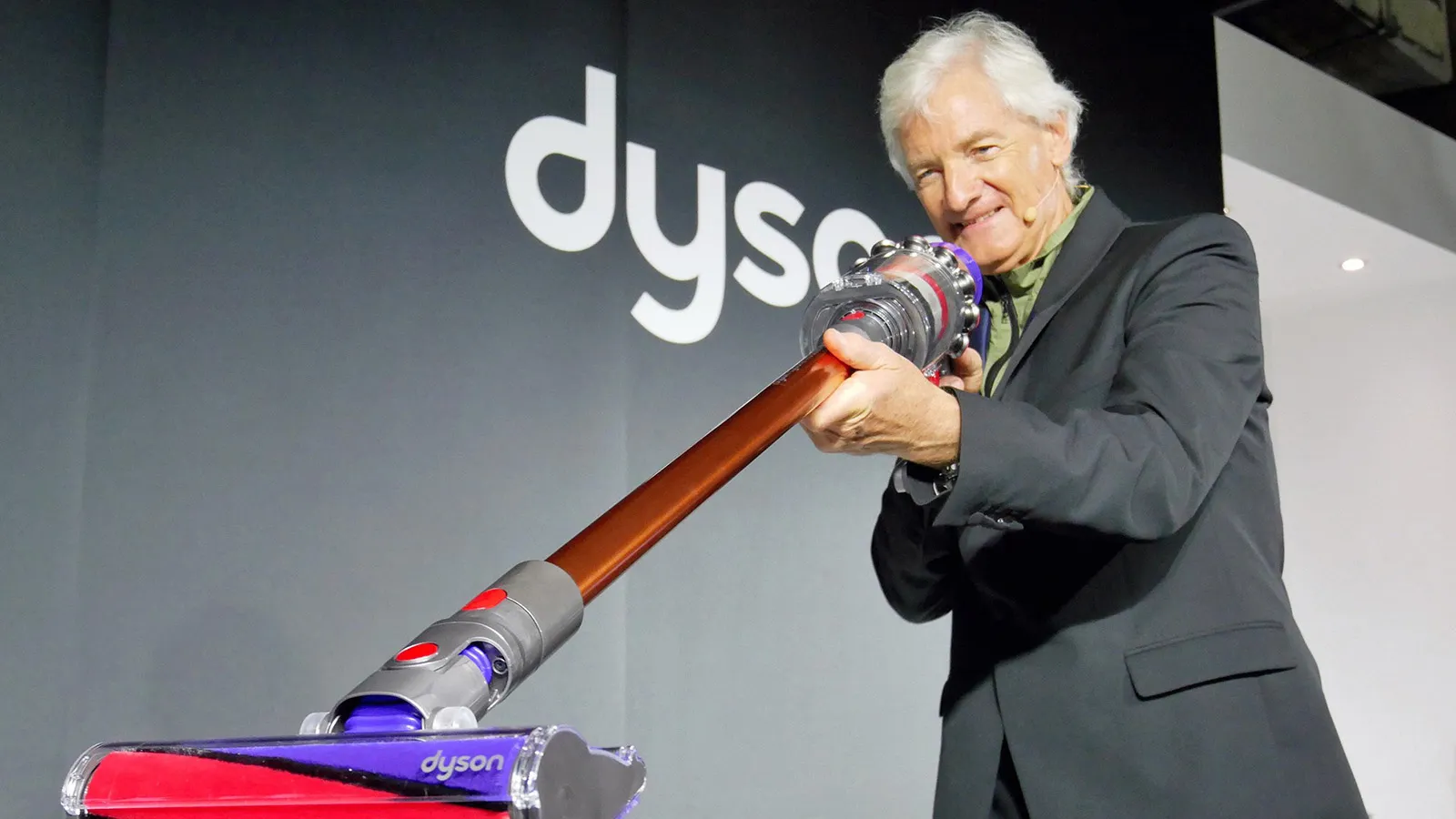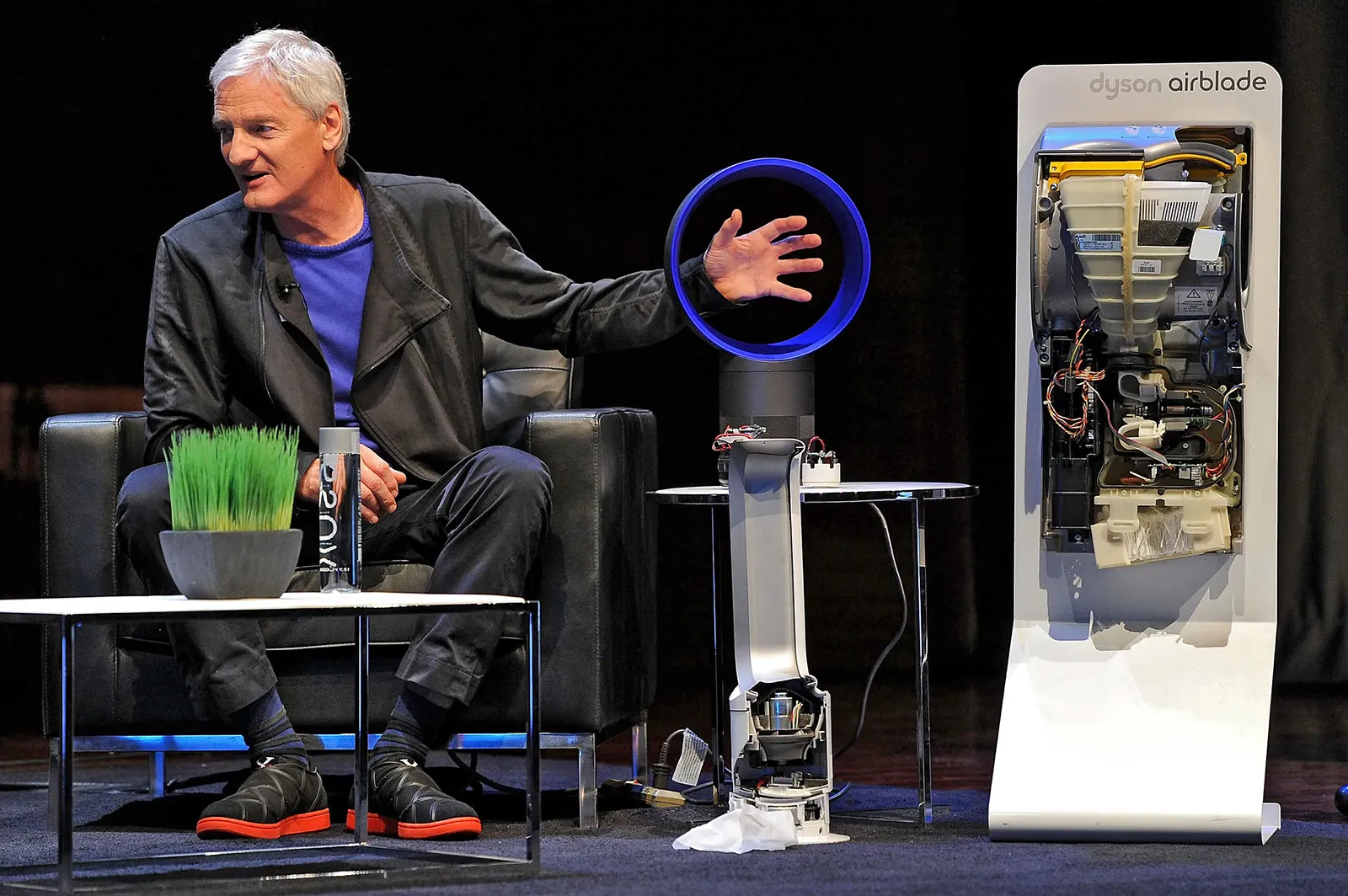James Dyson: The Secret Superhero Of Cyclones
He’s now known as one of the most innovative and successful inventors of the modern era, but James Dyson’s path to success has been riddled with unsuccessful meetings and unimpressed investors, all of whom now bitterly regret passing on the opportunity to back Dyson’s designs. This Secret Superhero’s career is not just a cautionary tale for investors on the perils of laughing at unusual ideas, but also an inspirational template for designers and inventors struggling to convince investors of the value of their creations.

TRAGEDY AND UPHEAVAL
James was born in 1947 in Cromer, a sleepy coastal town in the English county of Norfolk. His father was a teacher who taught at Gresham’s, a prestigious private school, but James was initially educated elsewhere, and would cycle from the grounds of Gresham’s - where the Dyson family lived - to his own school in a nearby village. Sadly, James’s father took ill when James was very young, with what turned out to be prostate cancer; he died when James was nine years old.
"The brand new social experience where you activate your gaming skills as you train like a spy."
- TimeOut
Take on thrilling, high-energy espionage challenges across different game zones.

This would have been a harrowing event for any young boy to deal with, and James was no different, but his father’s death also caused a degree of upheaval that would prove consequential in James’s later life. The family left the Gresham grounds, and James’ mother did not receive a pension, but the school agreed to take James and his brother on as students for half the usual fees. James would later write that his father’s death affected his future course in two major ways. The first was that “I had no one to help me through my boyish problems, and no one to cite his own youthful experiences to me… life became something I had to make up as I went along, and I had to work everything out for myself.” Secondly, his father’s tragic passing had come just before he was due to switch careers; James' father was unhappy as a teacher and was on the verge of switching careers to work in television when he became ill, and James resolved to never “be dragged into something I didn’t want to do”. In addition to becoming more headstrong and competitive, he also found his new status as a fatherless child made him stand out from his contemporaries as an oddity, something else which he would continue into adult life.
THE MOTHER OF INVENTION
James’ first brushes with invention as an adult were at least partly born out of necessity. He went to study interior design at the prestigious Royal College of Art, but at the same time his mother - who had left school at 17 to help with the war effort - returned to university as a fifty year old to read English. As James would later write, this “meant that she was a student at the same time as I was, so I had no one to go to for money. Even a little thing like that had a profound effect on my career, because it was the lack of cash back then that got me involved with an engineering company and my first commercial commission.”
Dyson had always had an interest in the theater, and particularly set design. By the time he was at the RCA he was designing entire auditoriums, which were often ambitious to the point of being considered unworkable by architects. One engineer, looking at a plan for a mushroom shaped auditorium made from aluminum, suggested that Dyson seek help from Jeremy Fry, a wealthy industrial designer who specialized in similar projects. Fry would go on to play an enormous role in Dyson’s story as a mentor and investor, and helped to develop the young designer’s potential long before talk of vacuum cleaners began. Fry initially enlisted Dyson to help with the Sea Truck, a marine landing craft that launched in 1970; the pair worked on the prototypes together, and this gave James his first experience of the product design process, as well as vital production skills such as welding. This experience provided the launchpad for Dyson’s own inventions, and Fry provided funding to help with the first of these, the Ballbarrow; a version of the traditional wheelbarrow design that replaced the wheel with a ball, greatly improving maneuverability.
The Ballbarrow was a great idea, but the company Dyson built to manufacture it, called Kirk-Dyson, did not fare well. The firm struggled with patent issues and took on too much debt, and had tremendous cashflow problems due to the seasonal nature of the gardening market. On top of this, the company had many impatient directors who took the decision to sell off the company’s intellectual property rights on the Ballbarrow - something that they knew James would never allow - so they began to make moves to have him removed from the company board. Unbeknownst to them, at the same time James was working on the first prototypes of his cyclonic vacuum cleaner.

CYCLONIC INNOVATIONS
The idea for the cyclonic cleaner came to Dyson in the late 1970s, while trying to solve a problem with Ballbarrow production. The entire factory had to stop work once every hour, in order to clean up the mess caused by an epoxy paint gun used in the finishing process. In an attempt to remove this bottleneck, Dyson contacted the manufacturers, who told him that most of their clients employed a “cyclone” to filter this mess. The cyclone is effectively just a tapered tube, with the unfiltered air rushing in at the thinner end at the top As it makes contact with the cyclone’s curved interior surface, it accelerates in much the same way as a roulette ball does when making contact with the wheel’s rim. This, combined with the downward force caused by the tapered wall, forces the dirt to the bottom of the tube, where it remains while the air is eventually forced up through the middle of the tube, and out of the top.
The cyclone technique didn’t just remove the bottleneck in the Ballbarrow factory, it also solved a problem James had been thinking about for months - how to improve his vacuum cleaner. At that time all vacuum cleaners used dust bags, consumable items that weren’t just expensive but also hugely inefficient; once the filters of the dust bag became clogged with dirt, the cleaner would lose suction and be reduced to an expensive broom, moving dirt around instead of picking it up. James excitedly applied a miniaturized version of the Ballbarrow cyclone - fashioned from cardboard and packing tape - to his own machine, and realized he was now the only person on Earth with a bagless vacuum cleaner.
BOARDROOM BATTLES
James made a slightly more robust prototype, and excitedly took it to the board of Kirk-Dyson, expecting a rapturous response. The reception was much cooler; one director replied “James, your idea can’t be any good. If there were a better kind of vacuum cleaner, Hoover or Electrolux would have invented it”. Soon afterwards, Dyson was removed from the board of Kirk-Dysion, and found himself turning once again to his old mentor, Jeremy Fry. With Fry’s investment, Dyson was able to work on better prototypes, and spent the next few years demonstrating these new, vastly superior cleaners to major electronics companies around the world. None of them were prepared to take a gamble on the idea, with many companies rejecting it because their own business models relied upon the sale of the expensive and counterproductive dust bags, which were a $500m industry at the time.
In 1983, after building an estimated 5,127 prototypes in his shed, Dyson finally managed to get a small number of his vacuum cleaners built. Approximately 500 were sold, largely through mail order catalogs, and one of these early machines finally landed James his first licensing deal with a Japanese firm, who were impressed with the product and in 1986 licensed a cyclone cleaner based on Dyson’s designs called the G-Force. The funds from this deal enabled James to set up his own company, Dyson Appliances, and in 1993 the first Dyson branded cleaner, the DA 001, began rolling off the factory floor. Within 18 months it was the biggest selling vacuum cleaner in the UK, and global dominance followed soon after.

SECRET PHILANTHROPIST
James has gone on to invent many new products that have revolutionized the markets they compete in: Dyson now produces air purifiers, hand dryers, bladeless fans, heaters, hair dryers and more, and all of these products rely upon innovative new designs that have become Dyson’s calling card. James’ eventual success as a designer has catapulted him into the limelight, but his status as a Secret Superhero is largely thanks to the quiet philanthropic work that he has been involved with for the last two decades. In 2001 he launched the James Dyson Foundation, which chiefly aims to boost engineering education through scholarships and funding initiatives in the UK, US and Japan, but also reaches out in other areas; notably in 2021 the Foundation made a $5m donation to build a new cancer services hub at the Royal United Hospital in Bath. These efforts, alongside the educational initiatives of the Foundation, stand as a fitting testament to the tenacity that this Secret Superhero has had to demonstrate throughout his career.
SPYSCAPE+

Join now to get True Spies episodes early and ad-free every week, plus subscriber-only Debriefs and Q&As to bring you closer to your favorite spies and stories from the show. You’ll also get our exclusive series The Razumov Files and The Great James Bond Car Robbery!


Gadgets & Gifts
Explore a world of secrets together. Navigate through interactive exhibits and missions to discover your spy roles.
Your Spy Skills
We all have valuable spy skills - your mission is to discover yours. See if you have what it takes to be a secret agent, with our authentic spy skills evaluation* developed by a former Head of Training at British Intelligence. It's FREE so share & compare with friends now!
* Find more information about the scientific methods behind the evaluation here.


Stay Connected
Follow us for the latest
TIKTOK
INSTAGRAM
X
FACEBOOK
YOUTUBE